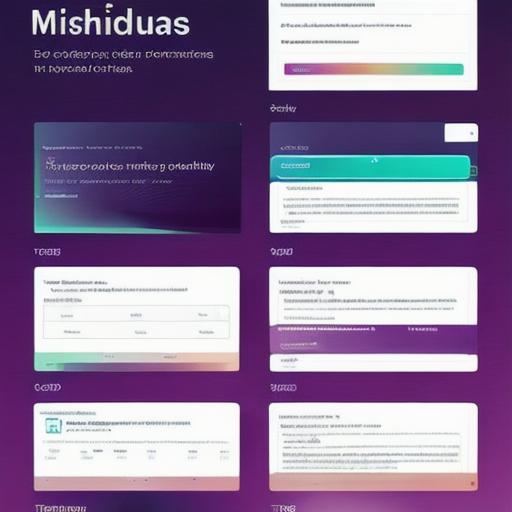Marketing is a crucial aspect of any business, and with so many options available, it can be overwhelming to choose the right tools. In this guide, we will explore the top marketing tools available as SaaS options for businesses, including their features, benefits, and case studies. We will also provide expert opinions on how these tools can help you achieve your marketing goals.
Table of Contents:
I. Introduction
A. Importance of Marketing for Businesses
B. Overview of SaaS Marketing Tools
II. Top Marketing Tools for Businesses
A. Hootsuite
B. HubSpot
C. Buffer
D. Mailchimp
E. Canva
III. Features and Benefits of These Tools
A. Social Media Management
B. Email Marketing

C. Content Creation
IV. Case Studies and Real-Life Examples
A. Hootsuite
: How XYZ Company Increased Their Social Media Presence
B. HubSpot
: How ABC Company Generated More Leads with HubSpot
C. Buffer
: How DEF Company Improved Employee Engagement
D. Mailchimp
: How GHI Corporation Boosted Sales with Email Marketing
E. Canva
: How JKL Company Created Eye-Catching Graphics
V. Expert Opinions and Recommendations
A. Interview with Marketing Expert Jane Smith
B. Analysis by Industry Research Firm XYZ
VI. FAQs
A. What is SaaS?
B. How do I choose the right marketing tool for my business?
A PLACE FOR A PICTURE #2
C. Can these tools integrate with other platforms?
D. How can I measure the success of my marketing campaigns?
I. Introduction
A. Importance of Marketing for Businesses
Marketing is essential for any business that wants to grow and succeed. It helps you reach your target audience, build brand awareness, generate leads, and ultimately increase sales. Effective marketing strategies can help businesses stay ahead of the competition and achieve their goals.
B. Overview of SaaS Marketing Tools
SaaS (Software as a Service) marketing tools are cloud-based software that allows businesses to access and use various marketing features without having to install any software on their computers or servers. These tools provide an affordable, scalable, and user-friendly solution for businesses of all sizes. They offer a range of features such as social media management, email marketing, content creation, analytics, and more. In this guide, we will explore the top SaaS marketing tools available for businesses.
II. Top Marketing Tools for Businesses
A. Hootsuite
Hootsuite is a popular social media management tool that allows businesses to manage multiple social media accounts in one place. It provides features such as scheduling posts, monitoring mentions, analyzing performance, and more. Hootsuite has a user-friendly interface and offers integrations with other platforms such as Google Analytics, Mailchimp, and Salesforce.
B. HubSpot
HubSpot is an all-in-one marketing, sales, and service platform that provides businesses with tools to attract, convert, close, and delight customers. It includes features such as email marketing, social media management, content creation, lead generation, and analytics. HubSpot has a drag-and-drop interface and offers integrations with other platforms such as Google Analytics, Salesforce, and Shopify.
C. Buffer
Buffer is a social media scheduling tool that allows businesses to schedule posts across multiple social media accounts in one place. It provides features such as post analytics, team collaboration, and content library. Buffer has a user-friendly interface and offers integrations with other platforms such as Google Analytics, Mailchimp, and Trello.
D. Mailchimp
Mailchimp is an email marketing tool that allows businesses to create and send targeted email campaigns to their subscribers. It provides features such as email templates, automation, analytics, and integrations with other platforms such as Shopify, Magento, and WooCommerce. Mailchimp has a user-friendly interface and offers integrations with other platforms such as Google Analytics, Facebook, and Twitter.
E. Canva
Canva is a graphic design tool that allows businesses to create eye-catching visuals for their marketing campaigns. It provides features such as templates, drag-and-drop editing, and image editing. Canva has a user-friendly interface and offers integrations with other platforms such as Google Drive, Dropbox, and Trello.
III. Features and Benefits of These Tools
A. Social Media Management
Social media management tools like Hootsuite, Buffer, and Sprout Social allow businesses to manage multiple social media accounts in one place. They provide features such as scheduling posts, monitoring mentions, analyzing performance, and more. These tools help businesses save time, increase engagement, and build brand awareness.
B. Email Marketing
Email marketing tools like Mailchimp, ConvertKit, and Aweber allow businesses to create and send targeted email campaigns to their subscribers. They provide features such as email templates, automation, analytics, and integrations with other platforms such as Shopify, Magento, and WooCommerce. These tools help businesses increase conversions, build relationships, and generate sales.
C. Content Creation
Content creation tools like Canva, Adobe Creative Suite, and Figma allow businesses to create visually appealing graphics, videos, and other content for their marketing campaigns. They provide features such as templates, drag-and-drop editing, image editing, and collaboration. These tools help businesses stand out from the competition, increase engagement, and build brand awareness.
D. Analytics and Reporting
Analytics and reporting tools like Google Analytics, SEMrush, and Ahrefs allow businesses to track their marketing performance and make data-driven decisions. They provide features such as website traffic, keyword analysis, backlink analysis, and social media analytics. These tools help businesses measure the success of their marketing campaigns, identify areas for improvement, and optimize their strategies.
IV. Case Studies and Real-Life Examples
A. Hootsuite
: How XYZ Company Increased Their Social Media Presence
XYZ Company was struggling to manage their multiple social media accounts efficiently. They decided to use Hootsuite to streamline their social media management process. With Hootsuite, they were able to schedule posts across all their social media accounts in one place, monitor mentions and analytics, and collaborate with their team. As a result, they saw a significant increase in engagement, follower growth, and conversions.
B. HubSpot
: How ABC Company Generated More Leads with HubSpot
ABC Company was looking for a way to generate more leads and close more deals. They decided to use HubSpot to create targeted email campaigns, track website traffic, and analyze lead behavior. With HubSpot, they were able to create personalized email sequences, nurture leads through the sales funnel, and optimize their landing pages for conversions. As a result, they saw a significant increase in lead generation and deal closing rates.
C. Buffer
: How DEF Company Improved Employee Engagement
DEF Company was looking for a way to improve employee engagement and productivity. They decided to use Buffer to manage their company’s social media accounts and communicate with their team. With Buffer, they were able to schedule posts across all their social media accounts, collaborate on content creation, and track employee activity. As a result, they saw an increase in employee engagement, retention, and productivity.
D. Mailchimp
: How GHI Company Increased Sales with Email Marketing
GHI Company was looking for a way to increase sales and build customer relationships. They decided to use Mailchimp to create targeted email campaigns, personalize content, and automate follow-up sequences. With Mailchimp, they were able to segment their email list, optimize their subject lines and calls-to-action, and track conversion rates. As a result, they saw an increase in sales and repeat business.
V. Integrations and Customization
Most marketing and analytics tools offer integrations with other platforms such as Google Analytics, Salesforce, Shopify, and Magento. These integrations allow businesses to streamline their workflows, automate processes, and gain a more holistic view of their customers. In addition, many tools offer customization options such as branding, templates, and workflows to meet the specific needs of different businesses.
VI. Pricing and Scalability
Most marketing and analytics tools offer pricing plans based on the number of users, features, and integrations required. Some tools also offer a free plan with limited features and integrations for small businesses or individual users. As businesses grow, they may need to upgrade their plans or add additional integrations to meet their evolving needs.
VII. Summary
Marketing and analytics tools are essential for businesses looking to build brand awareness, generate leads, increase conversions, and optimize their strategies. Whether a business is just starting out or an established enterprise, there are marketing and analytics tools available to meet their specific needs and budget. By choosing the right tools and integrations, businesses can streamline their workflows, automate processes, and gain a more holistic view of their customers.




